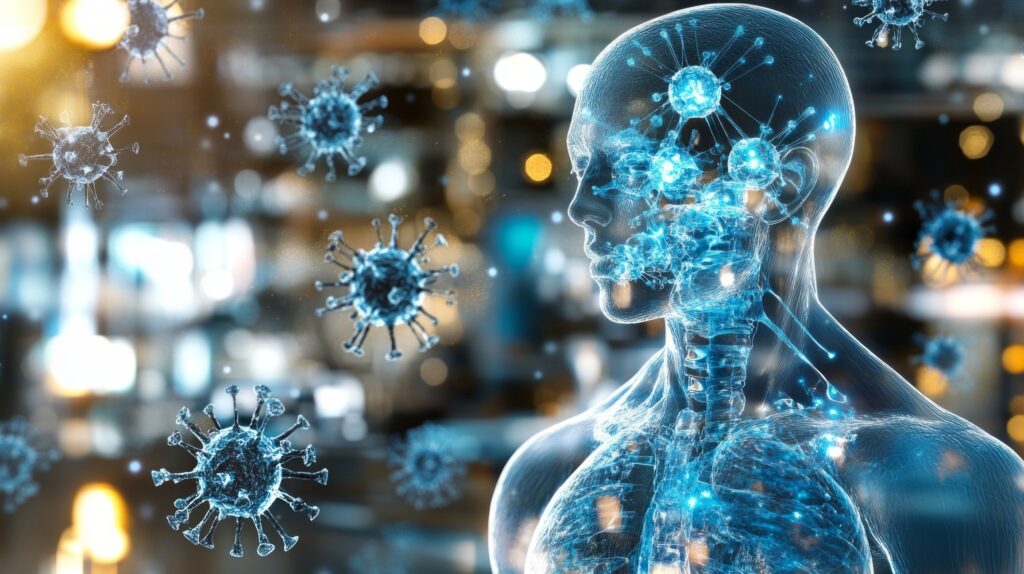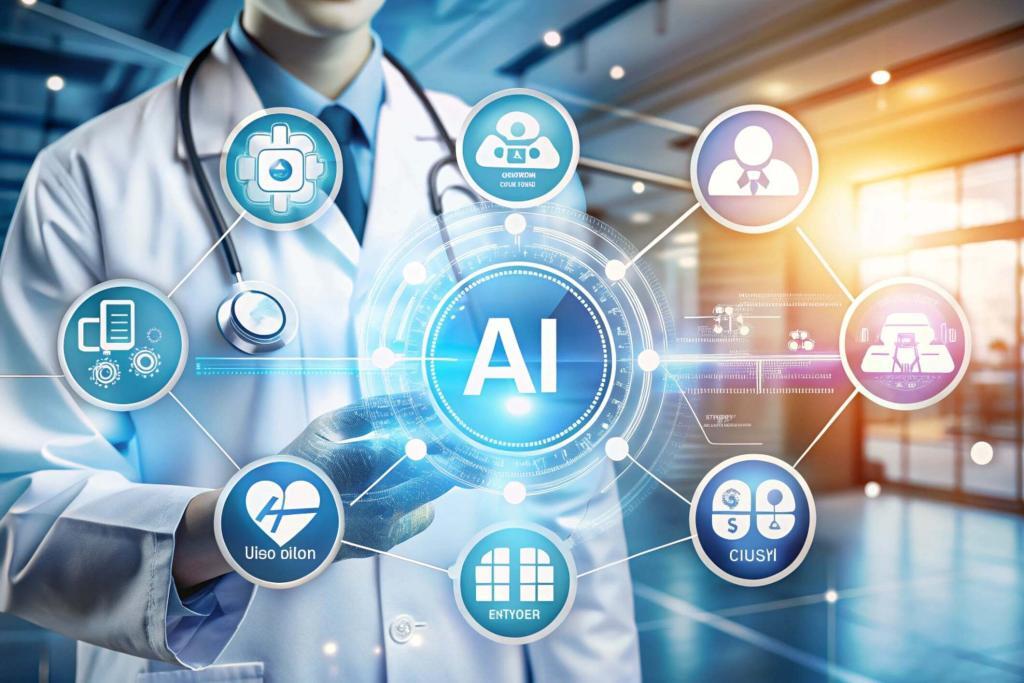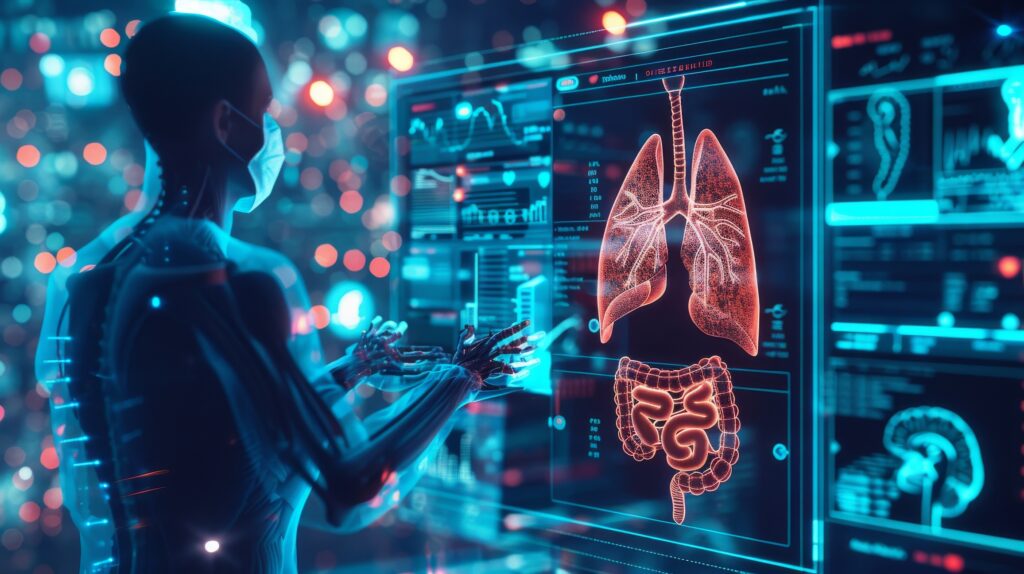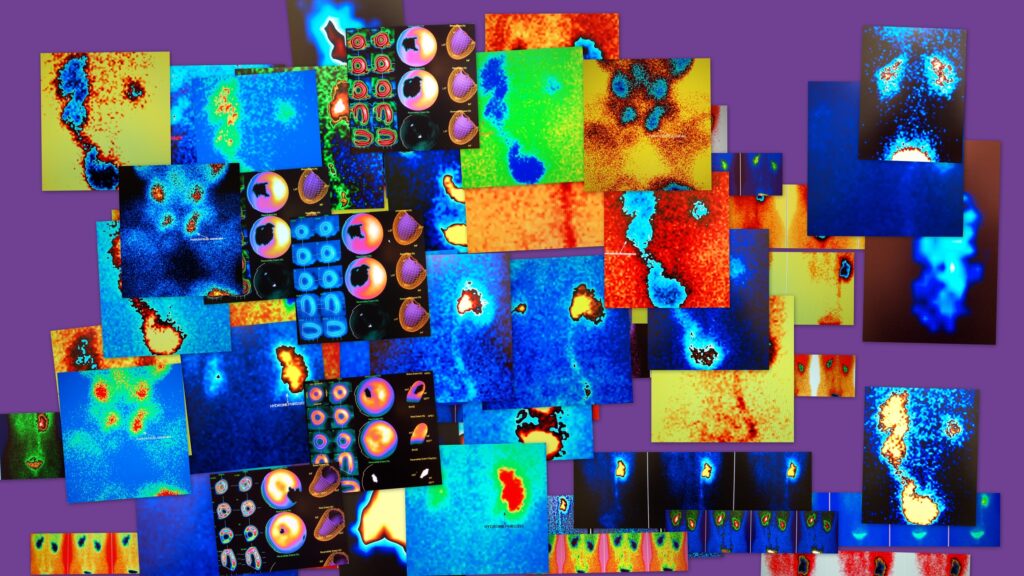Summary: Medical imaging has long been at the forefront of clinical diagnosis and patient management, but in recent years, the rapid integration of artificial intelligence (AI) has transformed the field into a dynamic force driving precision medicine. From automating image interpretation and reducing human error to enabling real-time data analytics and predictive modelling, AI is redefining how clinicians, researchers, and technologists collaborate. This transformation, however, brings both opportunities and challenges—ethical considerations, data governance, and seamless integration with existing healthcare frameworks remain critical. This article explores how AI is reshaping medical imaging through innovation, efficiency, and enhanced patient care, while highlighting the barriers that must be addressed for its responsible adoption.
Keywords: Artificial intelligence in radiology, machine learning in diagnostics, medical image analysis, healthcare data integration, imaging innovation, clinical decision support
The Transformation of Medical Imaging Through Artificial Intelligence
Over the past decade, the intersection of artificial intelligence and medical imaging has redefined how diseases are detected, monitored, and treated. Traditionally, imaging modalities such as X-ray, MRI, CT, PET, and ultrasound have relied on human expertise for interpretation. Radiologists spend years developing the ability to discern subtle abnormalities in complex scans, yet the volume of imaging data in modern healthcare has grown exponentially. AI has emerged as a critical tool to meet this demand, enabling the processing and interpretation of large datasets with remarkable accuracy and speed.
Machine learning and deep learning algorithms, trained on vast repositories of annotated images, now play a pivotal role in identifying early disease indicators that may be imperceptible to the human eye. For instance, convolutional neural networks (CNNs) have shown extraordinary proficiency in image classification and pattern recognition, enabling automated detection of tumours, microfractures, or subtle lesions. This transformation is not about replacing radiologists but enhancing their diagnostic capabilities, allowing them to focus on complex decision-making rather than routine image screening.
The capacity for AI to learn continuously also means that imaging systems can adapt to evolving medical knowledge. As datasets expand and algorithms mature, their diagnostic performance improves over time, leading to more accurate and consistent results. This evolution positions AI as a long-term partner in clinical imaging rather than a short-lived technological trend.
Innovations Redefining Diagnostic Accuracy
The innovation cycle in medical imaging is accelerating rapidly due to advances in AI-driven analysis and automation. One of the most remarkable developments is the use of AI for image segmentation—the process of delineating anatomical structures or pathological regions within an image. Accurate segmentation is crucial in oncology, neurology, and cardiology, where treatment planning often depends on precise measurements of tumour size or organ volume.
AI tools now provide automated segmentation that can rival —and sometimes surpass —manual annotation in terms of speed and reliability. In oncology, for example, AI models can measure tumour progression across serial scans, helping clinicians assess therapeutic response. Similarly, in cardiac imaging, machine learning algorithms can quantify ejection fraction and other critical parameters from echocardiograms with impressive accuracy.
Another innovation is AI-assisted image reconstruction, which enhances the quality of images acquired from modalities such as MRI and CT. By reducing noise and optimising resolution, these algorithms allow for faster scanning with lower radiation doses or contrast agent volumes, improving patient comfort and safety. Furthermore, AI-enhanced reconstruction reduces artefacts that often compromise image clarity, particularly in motion-sensitive studies.
Predictive analytics represents another frontier. AI can integrate imaging data with genomic and clinical information to forecast disease progression and treatment outcomes. This fusion of imaging with data science underpins the concept of “radiomics,” in which quantitative imaging features serve as biomarkers for disease characterisation. Such integration is paving the way for personalised medicine, in which diagnosis and therapy are tailored to each patient’s unique biological profile.
Integrating AI into Clinical Practice
While technological progress is impressive, integrating AI into clinical practice requires careful planning and adaptation. Healthcare systems are complex, with diverse workflows and varying levels of digital maturity. Introducing AI tools demands compatibility with existing picture archiving and communication systems (PACS), radiology information systems (RIS), and electronic health records (EHRs).
Successful integration depends not only on technical interoperability but also on clinicians’ trust and acceptance. Radiologists must feel confident that AI systems provide reliable support without compromising their professional autonomy. Transparency in algorithm design, performance validation, and regulatory approval processes is therefore essential. The “black box” nature of some AI systems remains a challenge—clinicians need to understand how algorithms reach their conclusions to ensure they align with clinical reasoning.
Hospitals adopting AI are increasingly developing multidisciplinary teams that include data scientists, radiologists, and IT specialists. These collaborations ensure that AI systems are tailored to real-world clinical needs and that workflow integration enhances efficiency rather than introducing complexity. Moreover, continuous monitoring of AI performance in clinical settings is crucial to maintain quality and safety standards.
Training also plays a vital role. Medical professionals must develop a fundamental understanding of AI principles, not to code or design algorithms, but to interpret and apply their outputs responsibly. Medical schools and radiology training programmes are now incorporating AI literacy into their curricula, preparing the next generation of clinicians to work effectively alongside intelligent systems.
Challenges in Data, Ethics, and Regulation
The adoption of AI in medical imaging brings significant ethical and regulatory challenges that must be carefully addressed. Data privacy and security remain at the forefront, as AI systems require vast amounts of patient data for training and validation. Ensuring that this data is de-identified, securely stored, and used responsibly is a major concern for healthcare institutions.
Bias in AI algorithms is another critical issue. If training datasets do not represent diverse patient populations, the resulting models may produce inequitable outcomes. For example, an AI system trained predominantly on data from one ethnic group might underperform when applied to another. Addressing such biases requires deliberate efforts to collect balanced datasets and continuously evaluate algorithmic fairness.
Regulatory frameworks are also evolving. In the United Kingdom, the Medicines and Healthcare products Regulatory Agency (MHRA) and the National Institute for Health and Care Excellence (NICE) are developing standards for evaluating AI-based medical devices. These include requirements for clinical validation, post-market surveillance, and ongoing risk assessment. The European Union’s Artificial Intelligence Act further outlines transparency and accountability obligations, particularly for high-risk systems in healthcare.
Another challenge involves the ethical implications of automation. As AI takes on more diagnostic tasks, questions arise about responsibility and accountability in the event of an error. Clear legal and professional frameworks are required to define where responsibility lies between human clinicians and AI systems.
The Future of Collaborative Intelligence
Rather than viewing AI as a replacement for human expertise, the future of medical imaging is built on collaboration between humans and machines. This concept, often referred to as “collaborative intelligence,” recognises that AI excels at pattern recognition and data processing, while humans bring contextual understanding, empathy, and ethical judgement. Together, they form a powerful partnership capable of delivering higher-quality care.
AI can serve as a second reader, flagging potentially overlooked findings or verifying human assessments. In busy radiology departments, this dual approach enhances diagnostic confidence and reduces fatigue-related errors. For example, AI algorithms used in mammography screening programmes can pre-screen thousands of images, allowing radiologists to focus on the most suspicious cases.
Moreover, AI-driven workflow optimisation tools can streamline image acquisition, scheduling, and reporting. By automating administrative tasks, these systems free clinicians to devote more time to patient interaction and multidisciplinary discussions. The role of radiologists is thus shifting from image interpretation alone to that of data integrators and clinical consultants who synthesise information from multiple sources.
Remote collaboration is also being enhanced through AI. Cloud-based imaging platforms equipped with AI tools enable specialists to analyse scans from anywhere in the world, supporting telemedicine and global healthcare initiatives. This democratisation of expertise holds great promise for underserved regions where access to trained radiologists is limited.
Towards a Responsible and Sustainable Future
As medical imaging continues to evolve through AI innovation, the focus must remain on responsible and sustainable implementation. The benefits of AI—faster diagnosis, improved accuracy, and reduced workload—must be balanced against the need for ethical oversight and patient trust. Transparency in AI development, rigorous validation, and stakeholder engagement are essential pillars of sustainable adoption.
Sustainability also involves considering the environmental and economic impacts of AI technologies. Training large neural networks consumes substantial computational energy, prompting a need for more efficient algorithms and infrastructure. Additionally, the cost of integrating AI into healthcare systems must be justified by measurable improvements in patient outcomes and operational efficiency.
Looking ahead, the synergy between AI and imaging will extend beyond diagnostics. Therapeutic imaging, real-time surgical guidance, and molecular imaging are areas where AI will play an increasingly important role. As imaging data becomes more intertwined with genomic, proteomic, and clinical data, AI will enable new forms of disease prediction and preventive healthcare.
In the long term, medical imaging powered by AI will contribute to a more connected and intelligent healthcare ecosystem. Clinicians will be supported by adaptive tools that not only interpret images but also anticipate clinical needs and recommend personalised interventions. Patients will benefit from earlier detection, more accurate diagnosis, and tailored treatment pathways, marking a significant shift towards truly data-driven medicine.
Conclusion
Artificial intelligence is reshaping the landscape of medical imaging by transforming how data is analysed, interpreted, and integrated into clinical care. It enhances diagnostic precision, accelerates workflows, and supports the shift towards personalised and predictive medicine. However, this transformation requires thoughtful integration, ethical governance, and collaboration across disciplines. The ultimate success of AI in medical imaging will depend on how effectively the medical community harnesses its potential while maintaining trust, transparency, and patient-centred care. As technology and medicine continue to converge, the radiology departments of the future will stand as models of collaboration between human expertise and intelligent systems—a partnership redefining the practice of modern medicine.
Disclaimer
The content provided in AI Revolutionising Medical Imaging: Transforming Diagnosis and Care by Open MedScience is intended for general informational and educational purposes only. It does not constitute professional medical advice, clinical guidance, or regulatory instruction. While every effort has been made to ensure the accuracy and relevance of the information presented, Open MedScience makes no representations or warranties, express or implied, regarding its completeness, reliability, or suitability for any particular purpose.
Readers should not rely on this material as a substitute for professional medical judgement or decision-making. Clinical application of artificial intelligence technologies should always comply with relevant legal, ethical, and institutional standards, and be guided by qualified healthcare professionals. Open MedScience does not endorse any specific product, software, or company mentioned within the article, nor does it assume responsibility for any actions taken based on its content.
All opinions expressed are those of the authors and contributors and do not necessarily reflect the official views or policies of Open MedScience or its affiliates.
You are here: home » diagnostic medical imaging blog »



